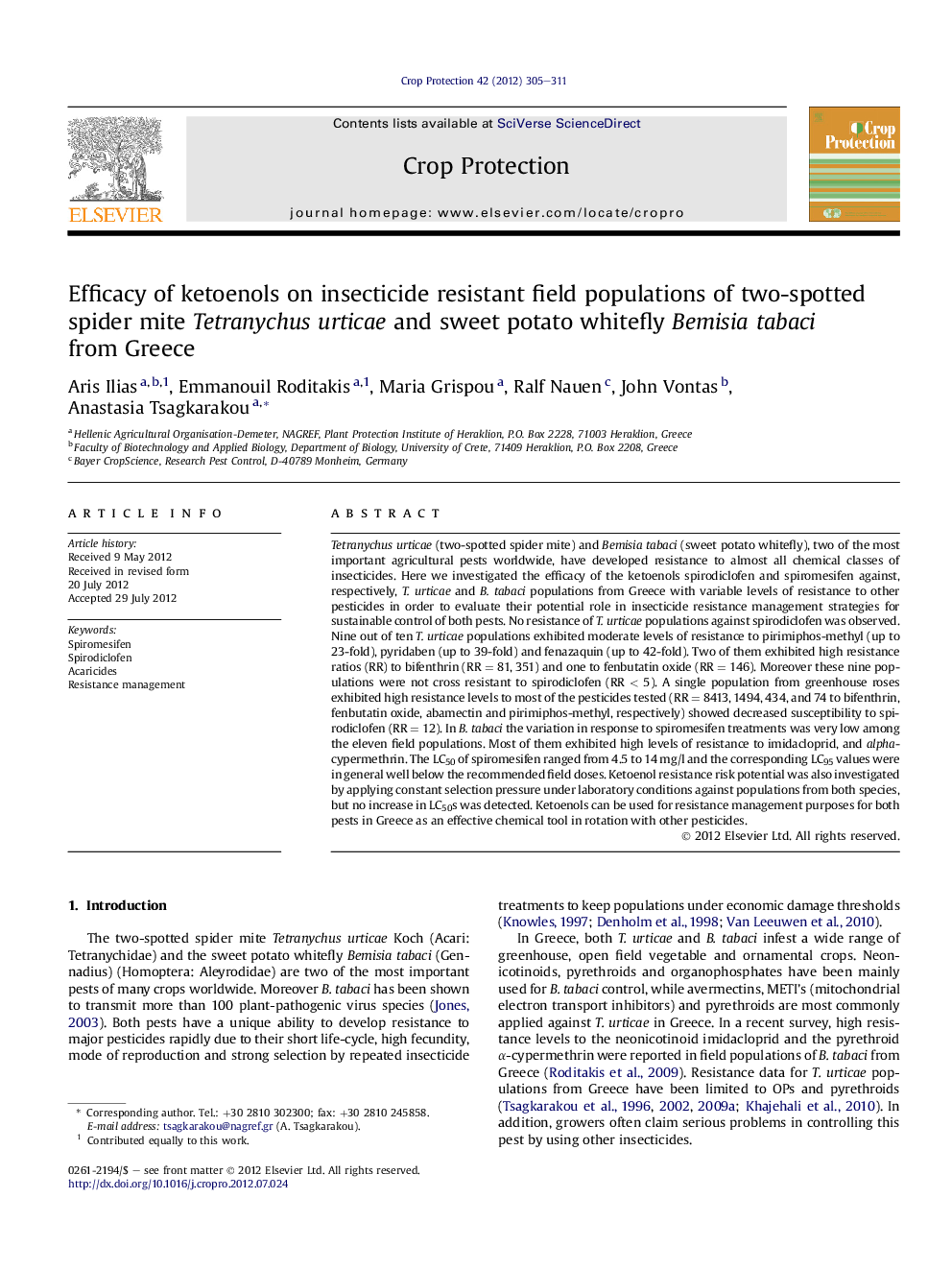| کد مقاله | کد نشریه | سال انتشار | مقاله انگلیسی | نسخه تمام متن |
|---|---|---|---|---|
| 4506178 | 1624345 | 2012 | 7 صفحه PDF | دانلود رایگان |

Tetranychus urticae (two-spotted spider mite) and Bemisia tabaci (sweet potato whitefly), two of the most important agricultural pests worldwide, have developed resistance to almost all chemical classes of insecticides. Here we investigated the efficacy of the ketoenols spirodiclofen and spiromesifen against, respectively, T. urticae and B. tabaci populations from Greece with variable levels of resistance to other pesticides in order to evaluate their potential role in insecticide resistance management strategies for sustainable control of both pests. No resistance of T. urticae populations against spirodiclofen was observed. Nine out of ten T. urticae populations exhibited moderate levels of resistance to pirimiphos-methyl (up to 23-fold), pyridaben (up to 39-fold) and fenazaquin (up to 42-fold). Two of them exhibited high resistance ratios (RR) to bifenthrin (RR = 81, 351) and one to fenbutatin oxide (RR = 146). Moreover these nine populations were not cross resistant to spirodiclofen (RR < 5). A single population from greenhouse roses exhibited high resistance levels to most of the pesticides tested (RR = 8413, 1494, 434, and 74 to bifenthrin, fenbutatin oxide, abamectin and pirimiphos-methyl, respectively) showed decreased susceptibility to spirodiclofen (RR = 12). In B. tabaci the variation in response to spiromesifen treatments was very low among the eleven field populations. Most of them exhibited high levels of resistance to imidacloprid, and alpha-cypermethrin. The LC50 of spiromesifen ranged from 4.5 to 14 mg/l and the corresponding LC95 values were in general well below the recommended field doses. Ketoenol resistance risk potential was also investigated by applying constant selection pressure under laboratory conditions against populations from both species, but no increase in LC50s was detected. Ketoenols can be used for resistance management purposes for both pests in Greece as an effective chemical tool in rotation with other pesticides.
► Ketoenols are effective against Tetranychus urticae and Bemisia tabaci populations.
► Ketoenols did not display any cross resistance with other pesticides tested.
► Artificial selection with both compounds did not increase resistance.
► Ketoenols can be used as a resistance breaker in rotation with other pesticides.
Journal: Crop Protection - Volume 42, December 2012, Pages 305–311